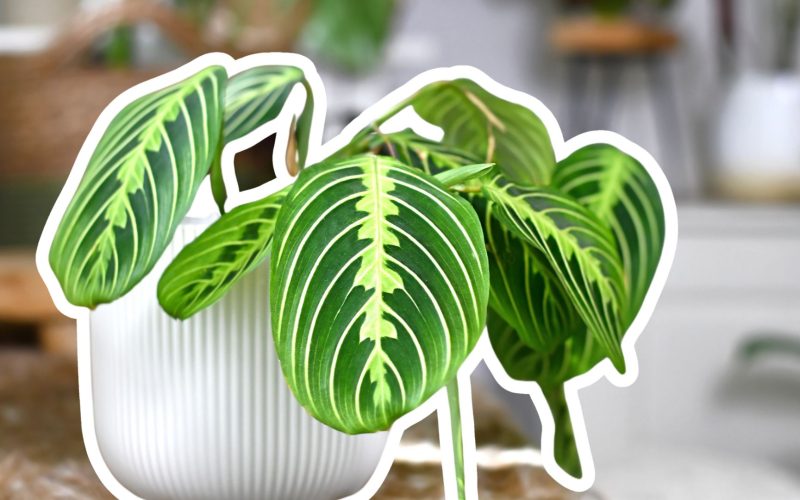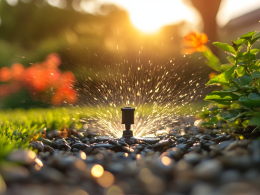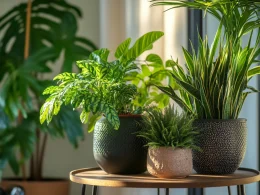Some people are blessed with massive yards with even ground and natural light. Others contend with rocky wastelands with only a few square feet of viable planting space. The unluckiest of us have ten feet of concrete balcony.
In these conditions, it doesn’t matter how green your thumb is. You must get creative with your space through deliberate planning and meaningful sacrifice. While you might not precisely copy that social media garden, you can achieve a similarly impressive look unique to your space.
Effective Space Planning
The smaller the yard, the more crucial a calculated layout becomes. Looks can be deceiving, and many people underestimate how much space is available at a glance. Blocking out your yard into definitive zones helps you get organized and develop a mental image of the final result.
Create Defined Zones
The ideal yard makes you want to spend your time there rather than a place you look at from a window inside the house. While you can’t fit a tennis court in a small yard, it is possible to hit the big three: lounging space, dining section, and a garden.
Smaller yards can’t separate areas by leaving gaps between different furniture types. There isn’t enough room. The most definitive method for segmenting sections is using distinct materials or styles for each space.
Consider installing wood flooring underneath one section and contrasting other areas using grass, stone, or concrete bases. Whatever material is used, create a deliberate cutoff point so the eye can tell where each zone ends.
These clear markers allow different types of furniture and features to sit closer together without looking like they’re interfering with each other.
Multi-Functional Furniture

Placing multiple furniture sets will sometimes stifle the space and impede walkability. Multi-functional furniture is usable in various relaxing and recreational scenarios, making it ideal for small backyards.
Some examples include a firepit that transforms into an eating surface, a sectional with undercarriage storage, or a retractable canopy. Employing these multi-purpose options allows homeowners to combine lounging and dining spaces into one compact space.
Vertical Space Utilization
When you can’t build outwards, start building upwards. Homespun decorators tend to look at the available square footage as the only metric for space. It’s more helpful to consider the “volume” of your backyard and learn to play with the vertical through stackable or hanging features.
Vertical Gardening
Gardens don’t have to be contained to the ground. Adding greenery to walls or other vertical supports can chase away the almost-clinical vibe many backyards exhibit. Gardeners can grow plants upwards or draped over terraced surfaces.
The backbone of this gardening method is vertical structures. Walls, fences, arbors, trellises, and obelisks are classic latching points for growing plants. However, any upright structure will work, so the possibilities are limitless.
Vertical gardening also allows homeowners to stray from the standard lilies, roses, and petunias plaguing every house on the block. Popular planting options include herbs, lettuces, strawberries, moss, and flowering vines.
Tactfully grown plants on fences and trellises can block the sun and create cooling sections in your backyard.
Hanging and Stacked Planters
Raised and hanging planters are great for coloring in empty air space in a garden. They are also uniquely space-efficient and decorative, showcasing the entire planting pot rather than hiding it on the ground.
Hanging planters attach to ceilings via a cable and hook. They’re ideally fixed from patios, pergolas, and gazebos. The overlook of an apartment balcony is also a convenient home for these fixtures.
Placement is critical when it comes to hanging planters. They should hang at least five and a half feet off the floor. This height is in the line of sight for most people and out of reach of young children.
Also, avoid hanging planters above chairs, as someone may not notice them while getting up.
Plants are encouraged to grow further outside the pot since they have more room in the air to spread out. Common choices typically include plant species that drape over the planter’s rim, such as English Ivy, Spider Plant, and Philodendrons.
Stacking planters feature unique shapes that allow them to interlock. This design creates a tiered planting aesthetic, where greenery seems to sprout from all around the fixture. Gardeners use stacked planters to display a variety of plant species while only taking up a fraction of the floor space.
Smart Plant Choices and Landscaping
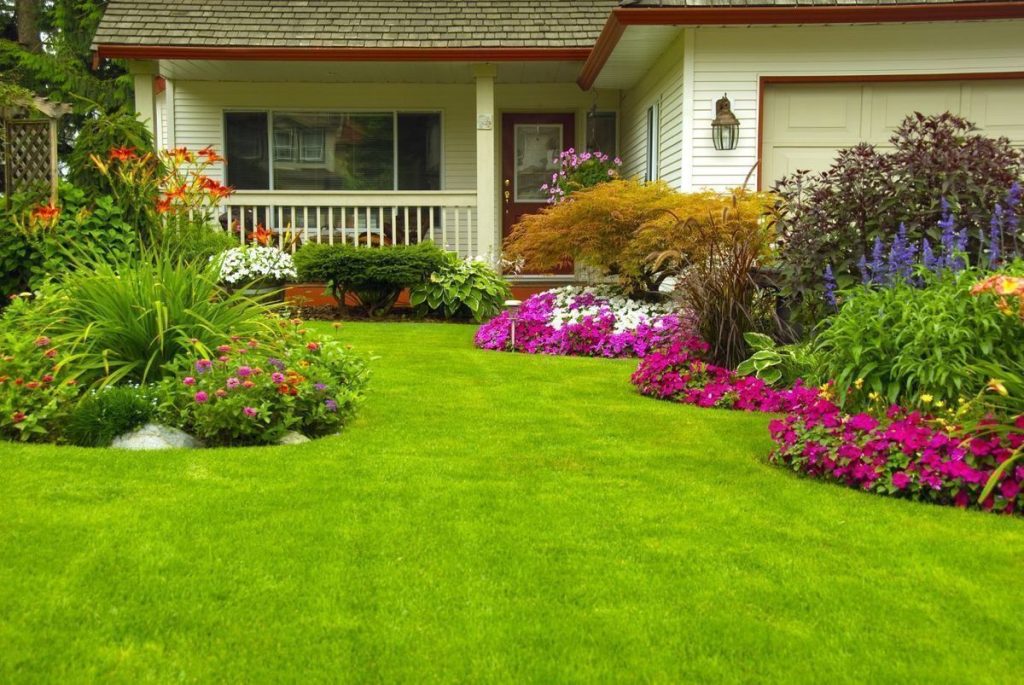
Creating a great backyard isn’t about adding random furniture and plants. Savvy homeowners utilize landscaping to manipulate the land into a form accommodating to their plans. Aspects like miniature foliage and various elevation levels create significantly more workable room.
Compact and Dwarf Plants
The problem with large trees and expansive shrubs is that they literally grow out of control. These species require open spaces to stay healthy or they can wind up looking wistful year-round. Without extensive effort, tree roots or overreaching foliage will creep onto walkways or inconvenient areas.
It’s better to choose species that plant in narrow spaces or beneath windowsills. Prioritize planting in spaces that other backyard features can’t fit into. Many plants, like Yellow Strawflowers, can even grow beautifully between the gaps in a stone pathway to soften the aesthetic.
There are also dwarf trees that stop growing beyond a certain height. The precise measurements of a “dwarf” species depend on who you ask, but they typically do not exceed fifteen feet in height. This more compact size allows for increased variety without needing a lumbering oak tree that overshadows other aspects of a small yard.
These species tend to grow more narrowly rather than creating expansive branch networks that eventually crowd the yard. Some examples include Sky Pencil Holly shrubs or Coffee Plants.
Low-Maintenance Plants
Low-maintenance landscaping means making intelligent changes that help autonomously maintain a backyard’s condition. This sounds more high-tech than it is. An easy way to keep things looking fresh is to choose plants that thrive in your environment and require very little upkeep.
Cacti are the quintessential example of low-maintenance plants. This plant family survives long periods of drought and naturally fends off animals that would damage typical flowers. However, cacti don’t survive well in damp environments, making them unsuitable for areas with frequent rain.
Every plant species has pros and cons, and the ideal plant will vary depending on location. A good rule of thumb is to look for plants native to your region. These plants will be naturally acclimated to the weather and soil in the area and can grow with little human intervention.
Container Gardening
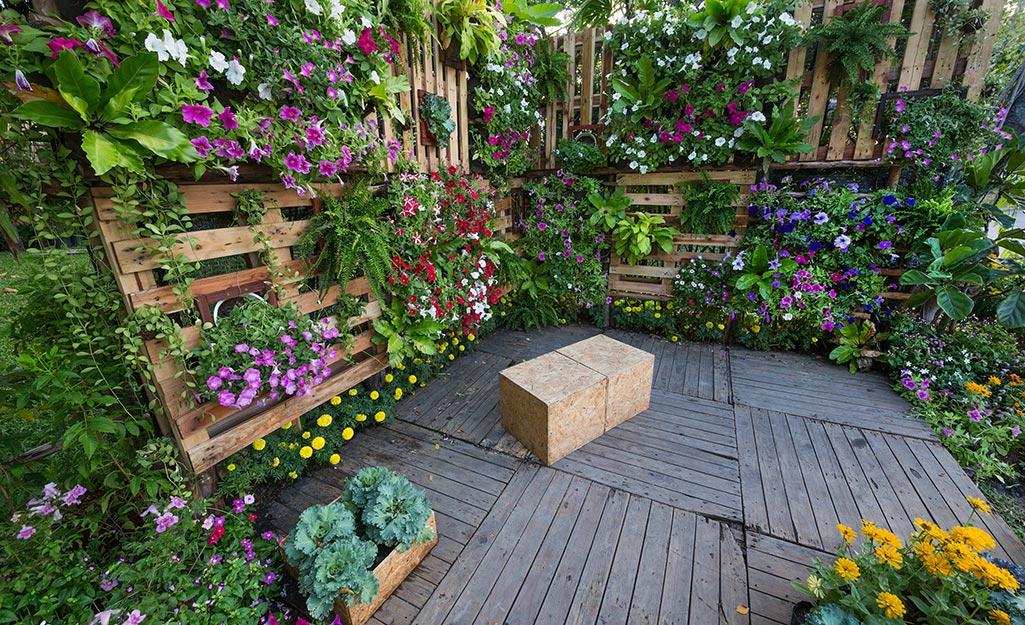
Some small backyards may not have adequate planting space due to poor soil or excessive concrete. Container gardening gets around these problems by planting in pots rather directly in ground soil.
Additionally, pots control root growth, making growing plants in smaller spaces viable rather than devoting a large patch of soil to each one.
Aside from besting the environment, container gardening has other benefits like increased mobility, water conservation, and improved plant health. Gardeners can flexibly move plants around, helping them create new designs and making it easier to control sun exposure.
Unless you’re comfortable replanting yearly, perennial plants are the best fit for container gardening. Giant Hyssop and Intenz Celosia are low-maintenance plants with unique colors and bloom structures.
Container gardening is unique because gardeners can create more delicate arrangements within a pot. This adds more diversity in a single pot than is achievable in a traditional flower bed. Choosing the right complementary plants is an art that might require professional gardening services to achieve the best results..
The most universal method for arranging container plants is the triangle method. Pick a colorful or eye-catching focal container plant and place smaller, less-dominating displays on either side. This method creates a full appearance without wasting space.
Ideal spots for container gardens are “blank walls,” which have nothing sitting around them or have no apparent purpose.
Layered Landscaping
Building layers in a backyard adds depth and creates stages that highlight other features. Having multiple focal points and improved visual interest also makes the space feel larger and more enjoyable.
There are two ways to visualize the layers in a backyard: top-to-bottom and front-to-back. Basically, these methods require the staging to look complete when viewed from up close or a distance. This applies to small and large yards.
The following principles will guide where you plant:
- Depth: The foreground (closer to the entrance) should include the shortest greenery. Raised beds and terracing should start in the middle or the back of the yard.
- Contrast: Plants directly in front or behind each other should have noticeably different colors, textures, or structures. From a distance, this allows the eye to differentiate changing levels easily.
- Scale: Repeating one plant species on varying elevations throughout the yard provides a sense of scale. Visitors can quickly grasp relative sizes and distances, recognizing that the plants are on different planes.
All of these principles can be applied regardless of the size of your backyard. Stacking planters at varying heights is perfect for patios, and hanging planter heights are easily adjustable.
Creating Illusions of Space
Some design hacks create the illusion of a larger yard. This doesn’t improve the amount of planting or leisure area, but it allows you to do more with the space without causing it to appear cramped.
Use of Mirrors
Mirrors reflect light, causing rooms to appear to extend past them. However, it’s not effective to hang any old mirror on the wall. Mirrors must be strategically placed to avoid looking tacky or obvious. This strategy also has some less-than-obvious pitfalls.
The first mistake many people make is hanging a mirror that’s too small. A mirror must have substantial coverage to trick the eye into believing a space extends past the frame. The mirror must also be one, reflective surface. The illusion does not occur when hanging multiple smaller mirrors.
The second pitfall is choosing a mirror with an ornate frame. Beautiful frames may look good paired with the garden, but they also subconsciously remind everyone that they’re looking at a mirror. The idea is to have people look into the space in the mirror, not the frame.
Wherever you choose to hang the mirror, keep these tips in mind:
- Hang the mirror at eye level, roughly 5 feet off the floor from the mirror’s center.
- Angle the mirror to reflect the garden or greenery, not the indoors.
- Choose a surface that sits at a right or obtuse angle. Acute angles close the space.
Remember that mirrors don’t always have to hang on the wall. Reflective coffee tables or storage bins angled toward an open area can significantly enhance a space.
Light and Neutral Colors
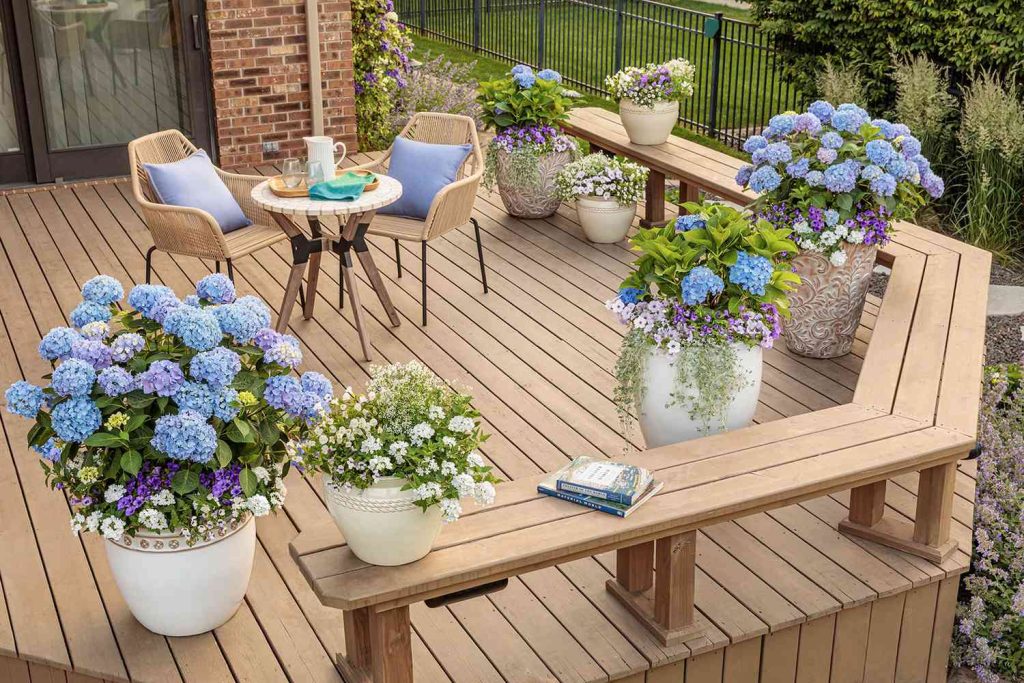
Light color schemes like pastels, neutrals, light blues, and cream shades create the illusion of a larger room. Small backyards can apply these colors to flooring, fences, planting pots, furniture, and even the colors of flowering plants.
Reddish hues cause objects to advance toward us, while blue hues carry into the distance. Think about how a clear blue sky evokes an enormous depth in the human mind. Generally, paler colors will appear further away from the viewer, causing a greater illusion of distance.
Enhancing Functionality
A beautiful backyard loses a lot of value if you can’t enjoy spending time in it. Maximizing functionality in a small yard means adding features that enhance your experience without sacrificing factors like walkability and visibility.
Incorporate Water Features
Running water and the sounds of wildlife are some of the most soothing qualities of outdoor time. Small backyards don’t have the space for infinity pools or massive fountains, but you can set up a miniature waterfall.
Some waterfalls are less than a foot tall and sit comfortably atop a lounge table. Other types are trenched into the ground between the flowerbeds. The biggest concern is ensuring the fixture’s surroundings are reasonably water-resistant.
On the less ostentatious side, a typical birdbath invites songbirds to the backyard. The animals add a soothing ambiance to the backyard, and many options are multi-purpose, including fountains in the design.
Birdbaths are best placed in the most natural section of your backyard. This typically means it’ll rest in the center of your garden. Prioritize keeping the birdbath relatively far from your lounging zones. Otherwise, the birds are less likely to enjoy themselves.
Efficient Lighting Solutions
Lighting is strongly tied to the mood and safety of any location. Procuring clear and stable lighting is a must for anyone spending time in their backyard after hours. However, small backyards can’t accommodate large, standing light fixtures.
This makes hanging string lights and low-profile fixtures the ideal option.
String lights fit into most situations. They can accommodate peaceful dinner nights and festive holidays. String lights also take up little to no floor space, attaching to any available high points for ample visibility.
Edison filament bulbs are the best option for decorative string lights. They provide a classic, antique appearance even in the brightest hours of the day.
Another option for backyard lighting is solar flood lamps. These fixtures store enough power during the day to last through the night. However, if you live in a region with shorter daylight hours, you may want to invest in motion-activated models.
A small yard isn’t a curse, but building a dream landscape takes more creativity. You’ll have to make a few sacrifices, but those will open up ideas you would never have considered.
The first and most crucial step is to organize the layout of your yard. Grasp what you’re working with and what limitations are purely in your head. Then, you can worry about filling the vertical space, choosing plants, and enhancing the experience with decorative features.
Take your time and be deliberate in your actions. These small backyard landscaping ideas will help you transform your dingy yard into a beautiful, functional, and inviting space that you’ll enjoy for years to come.







